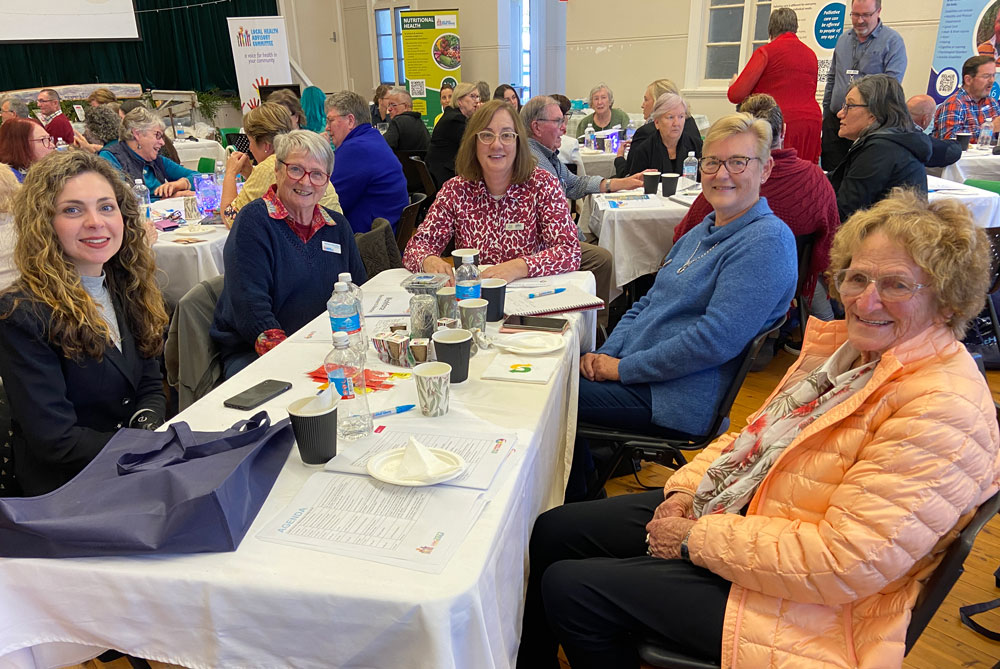Luke Sloane, Coordinator General of the Regional Health Division, sets out the priorities for regional health over the coming decade, and celebrates innovations that are advancing rural healthcare.
Since it was established in April 2022, the Regional Health Division has been connecting with healthcare workers and advocating for regional, rural and remote communities across NSW.
The team builds and maintains relationships with key stakeholders who share a commitment to improving health outcomes and access to health services for people living in regional NSW (including rural and remote areas).
In responding to the unique challenges of the regions, the Division focuses on community engagement, regional workforce, primary care reform and access to transport and accommodation.
Working closely with regional local health districts (LHDs) and valued partners, such as Aboriginal medical services, primary health networks and community organisations, the Division fosters collaboration, built on the foundation of a common purpose.
The Agency for Clinical Innovation (ACI) and Regional Health Division have a shared vision to shine a light on innovations in regional and rural healthcare, supporting each other and showcasing the excellent work being undertaken across regional NSW.
A strategic approach for regional health
In collaboration with key stakeholders, such as the ACI’s Rural Health Network, the Regional Health Division has developed the NSW Regional Health Strategic Plan 2022–2032.
The plan closely aligns with Future Health: guiding the next decade of care in NSW 2022-2032, which provides the strategic framework and priorities for the whole system over the next decade. Recognising the importance of improved outcomes for priority populations, the plan also emphasises specific actions for Aboriginal people identified through consultation with Aboriginal health staff, Aboriginal medical services and the community.
The plan is a blueprint for the future provision of health services that understands, and celebrates, the diverse and unique nature of regional communities.
The Regional Health Strategic Plan identifies six strategic priorities:
- Strengthen the regional workforce
- Enable better access to safe, high quality and timely health services
- Keep people healthy and well through prevention and education
- Keep communities informed, building engagement and seeking feedback
- Expand integration of primary, community and hospital care
- Harness and evaluate innovation to support a sustainable health system.
Importantly, the plan addresses issues raised in the NSW Parliamentary Inquiry into health outcomes and access to health and hospital services in rural, regional and remote NSW.
Addressing workforce challenges
The Regional Health Division is focused on the expansion of the Single Employer Model, which allows LHDs to employ rural generalist trainees to work in local hospitals and GP practices while completing their training.
The innovative model, piloted in Murrumbidgee LHD, helps attract doctors to work in regional, rural and remote hospitals, which will improve access to primary care and essential medical services in regional communities.
This approach reflects the essence of the NSW Rural Doctors Network’s Collaborative Care Program.
The program takes a community-centred approach to addressing the primary healthcare challenges in remote and rural NSW, including the recruitment and retention of health practitioners, financial sustainability of health services, and continuity of care.
The program is currently operating in communities in the Far West, Western and Murrumbidgee LHDs, and the Regional Health Division is working closely with the Rural Doctors Network to expand Collaborative Care to other parts of regional NSW.

Understanding the needs of the community
Community involvement in local health decision making is vital to keep people living in regional, rural and remote NSW healthy. Ensuring we have strong local health committees in these communities helps us shape health services into the future.
The Regional Health Division is supporting local health districts to strengthen community engagement through local health committees; by building connections, sharing learnings and partnering for capability development across the system.
The Division has been working with every regional LHD and connecting with local communities to support this significant engagement project.
As the Division continues to advocate for regional communities, it is always guided by the vision of the Regional Health Strategic Plan: A sustainable, equitable, and integrated health system that delivers outcomes that matter most to patients and the community in regional, rural and remote NSW.
About Luke Sloane
 Luke Sloane brings more than two decades of health experience to his role as the Coordinator General of the Regional Health Division of NSW Health. Born and raised in Orange, Luke began his career in nursing. He has worked in a range of senior nursing and midwifery, safety and quality and executive roles over the past 10 years. He has served as NSW Health’s Executive Director for System Management, which involved leading system performance, safety and quality, and support for the COVID-19 pandemic response at a system level.
Luke Sloane brings more than two decades of health experience to his role as the Coordinator General of the Regional Health Division of NSW Health. Born and raised in Orange, Luke began his career in nursing. He has worked in a range of senior nursing and midwifery, safety and quality and executive roles over the past 10 years. He has served as NSW Health’s Executive Director for System Management, which involved leading system performance, safety and quality, and support for the COVID-19 pandemic response at a system level.